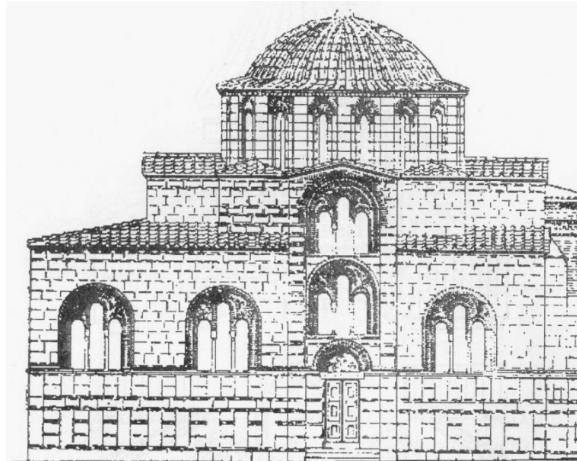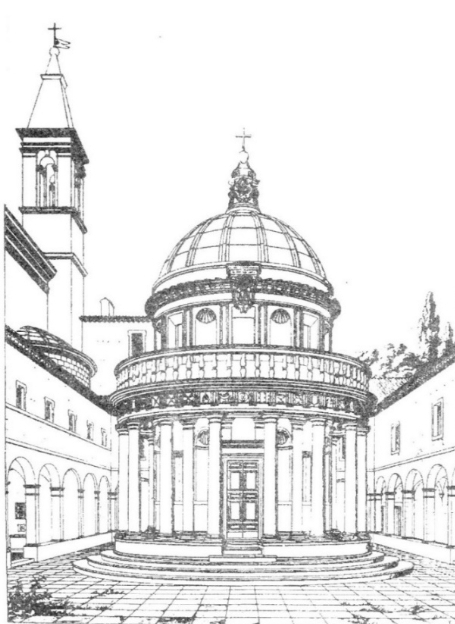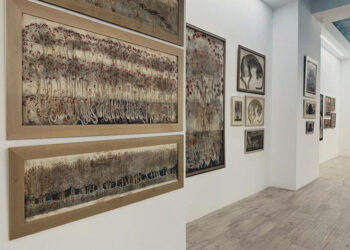By Prof. Dr. Tedo Dundua, Dr. Nino Silagadze, Dr. Emil Avdaliani,
Ivane Javakhishvili Tbilisi State University
European Union’s obvious pull to the East could result in creation of “united Europe”. We need to know history of this very integration. Amazing is to observe how Western and Eastern European countries, having their specific styles, in clothing, architecture etc., were trying to synthesize them while becoming more and more integrated. Now we will speak about architectural styles of Western and Eastern Europe.
History of Western and Eastern Europe, two still existing zones of integration, goes back to very old times. Christianity has been one of the most important and highly visual symbols of European affiliation while division into West and East was confirmed by the countries’ confessional affiliation to Western and Eastern Christianity. The Catholic and Protestant countries, on the one hand, and the Orthodox world, on the other, constitute two cultural communities with a rich history behind them. Present trend, which leads to unified Europe, is the most important feature of Europe’s cultural development. Georgia had a place of its own in the Eastern European integration and, via this, in the future, also has its place in common European home. History of monumental architecture in the country belongs to the same issue.
Eastern Europe and the Byzantine Style. History of the Christian monumental architecture goes back to the 4th-5th cс. Stylistic uniformity makes Christian architecture typologically close to Graeco-Roman World and sets it apart from the stylistically varied architecture of the Ancient Orient.
When Roman Empire fell apart, its Eastern provinces (Byzantium) became the cradle of a new style of monumental architecture. Still, Byzantine art was genetically connected with the Late Roman art. In architecture this genetic kinship is confirmed by basilicas and central-plan buildings, groined vaults, domes, similar construction techniques, etc.
This time is marked by the popularity of the domed cultic constructions across the Orthodox world (Eastern Mediterranean and Black Sea countries). The obvious bias toward architectural central plan and the highly developed domes and groined vaults in general can be described as “special features” of the Byzantine or Mediterranean-Black Sea style.
But the fact that the domed construction came to the fore in Eastern Christian architecture after a fairly short period of domination by the basilicas is worth of special mention. In Byzantium and Georgia basilicas remained popular in the 4th-5th cc., when there was no clear architectural stylistic division between Western and Eastern parts of the former Roman Empire.
Rome and Ravenna in the West, Constantinople, Asia Minor, Syria, North Africa, Caucasian Albania, Georgia and Armenia in the East have the classical examples of the early Christian basilicas. They stand side by side with circular shaped churches of simple central-plan forms: rotundas, the Greek cross, etc.
Under Emperor Justinian (the 6th c.) the situation in the Eastern Christian World evolved toward the central-plan forms that gradually moved to the fore in church architecture. They were represented either by pure (central-dome building) or synthetic (domed basilica) forms. The latter is a splendid achievement of Byzantine architecture. Hagia Sophia in Constantinople bears witness to the extreme fruitfulness of the idea.
The above suggests that the architecture of the Eastern European zone of integration (represented at its earliest stage by Byzantium and the “Transcaucasian” countries) demonstrates a two-stage development pattern: 4th-5th cc., dominated by a basilica; 6th c. and after, when domed buildings come to the fore to remain unchanged throughout the lifespan of the Byzantine style.

Byzantine Style
Western Europe and its Specific Architectural Style. Domed buildings were the hallmark of the Byzantine or Mediterranean-Black Sea style. Western Europe developed its own style, which reached its summit in the Romanesque and Gothic periods. It has nothing in common with the style popular in Byzantium and the countries in its sphere of influence. The Romanesque and Gothic styles mainly originated from France. Here we shall discuss them as a single phenomenon because of certain identical characteristics (geography of genesis and spread, typological range, other stylistic features, etc.).
The main distinguishing feature of the Byzantine style is the domed forms absent from the Romanesque-Gothic architecture. In Western Europe church architecture was dominated by so-called Latin basilica. The process of “eviction” of the domed forms from the typological range of the new “barbarian” states (accepted earlier in Western Europe under the Roman and Byzantine influences) is easy to trace. The central-plan buildings, quite frequent under the Merovingians (the 6th-8th cc.) and Carolingians (the 8th-9th), became an exception in the Romanesque period (the 10th-11th cc.), only to disappear completely during the Gothic period (the 12th-15th cc.). Thus, in the Romanesque period the West freed itself from Byzantine influence.
The above suggests that the two architectural styles correspond to the two main European zones of integration: Byzantine in Eastern Europe and Romanesque-Gothic in Western Europe.

Gothic Style
Italy with its somewhat dualistic architectural style stands apart: up to the Renaissance, it had been developing both the basilica and central-plan forms. There were neither typical Romanesque nor Gothic schools – Italy created its own highly specific Gothic style (it was Italian who coined the term Gothic to describe the architecture beyond the Alps). On the other hand, it never forgot the Roman tradition of domed buildings.
Baroque as a Common European Style. Both, the Byzantine and Romanesque-Gothic styles remained popular until the 15th c., when Gothic entered its last stage of development. In 1453 Constantinople fell to the Ottoman Turks, yet the Byzantine style remained popular by momentum in some of the Eastern European сountries (Georgia, Armenia, Russia, etc.), although its end was just around the corner. Gothic was also retreating from its positions in Western Europe. The Renaissance and later, Baroque (certain mixture of Byzantine and Gothic styles) moved in to change the face of Europe beyond recognition.
The Renaissance and Baroque were universal styles that covered vast geographic expanses – this was their main feature. The Renaissance architecture quickly spread to France, Germany, the Netherlands, Austria and Spain while Baroque moved even further, to Eastern Europe and even far-away Russia.
The European capitals and cathedrals acquired a more or less unified European style. Baroque changed the image of many cities: Rome, Paris, London, Madrid, St. Petersburg acquired new buildings that very much resembled each other. These European architectural styles reached Georgia much later, in the 19th c. (Tedo Dundua, Nino Silagadze. European Integration and Architectural Styles (How Globalization Started). The Caucasus and Globalization. Journal of Social, Political and Economic Studies. Volume 3. Issue I. 2009. CA and CC Press. Sweden, pp. 98-103).

Baroque
Today modern architecture with its simplicity is spread across the globe. From New York to London and from Tbilisi to Dubai – the modern architecture is omnipresent and points to the often criticized globalization. Georgia, as in any other point of its long history, is at the center of this globalized trend.














